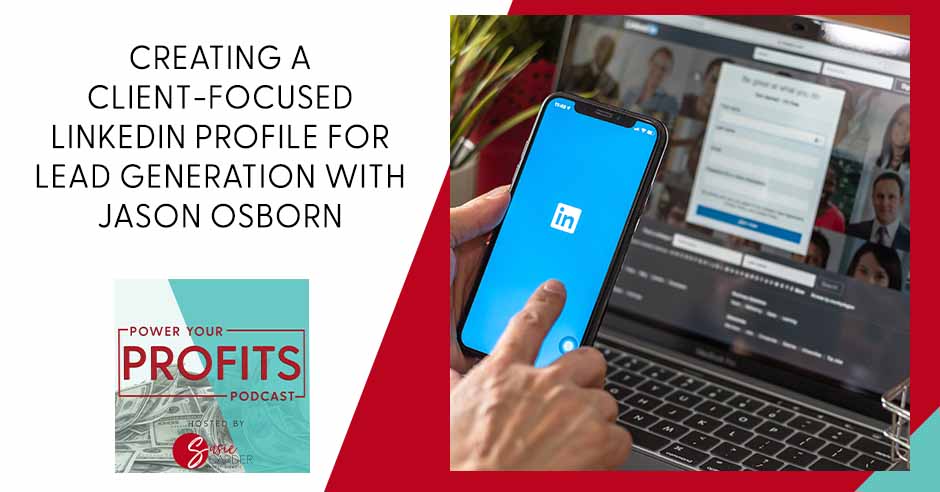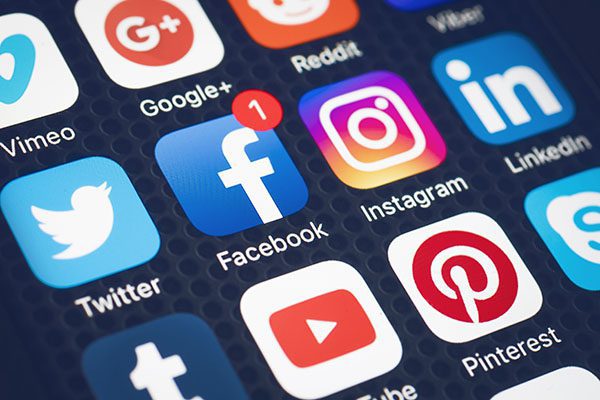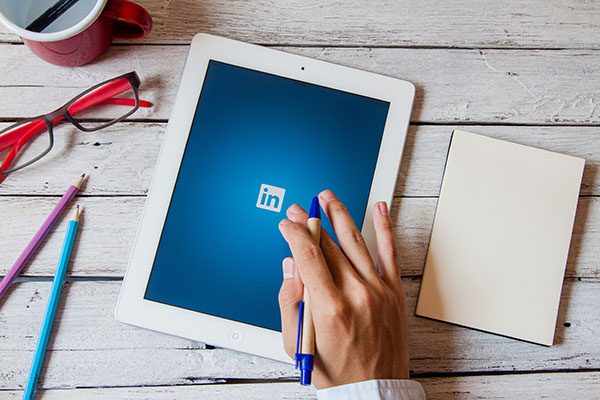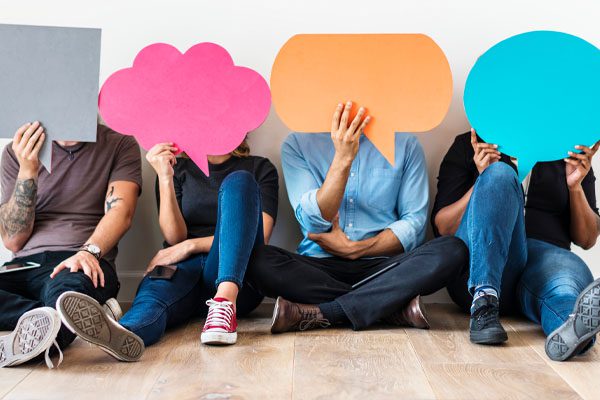
More people are on LinkedIn now generating leads because of the pandemic. The problem is, they aren’t using it how it’s supposed to be used. They are using it like how they would use Facebook. LinkedIn is not a social media platform; it’s a professional network. Join your host Susie Carder as she talks to the CEO of Impact For Leads, Jason Osborn. Join Jason as he will teach you the proper way to generate leads from LinkedIn. Learn how to be client-focused so that you can truly connect with your leads. Start scaling your business today by starting with your LinkedIn profile!
—
My next guest, Jason Osborn is a leading expert on LinkedIn, showing businesses around the globe generate high-quality leads without being spammy and paying for ads. Originally from Texas, Jason now lives in England by way of the Republic of Ireland. When he lived in Ireland, he trained as a life coach and started an online marketing business.
He had no idea how to market online so he had to learn how to do it. Within eighteen months, he grew an email list of over 9,000 people plus coaching people in thirteen countries. More and more people are asking Jason how he did what he was doing and wanted to know the secret to his online success. As a result, he transitioned his business to helping other businesses with their online marketing, focusing on LinkedIn and LinkedIn strategy. Please welcome my guest, Jason Osborn.
—
I’m so excited, Jason. Thank you for joining us and being on the show. Our tribe and I will be going to love this topic because this is one of those topics that can be pretty elusive. Before we start, I want you to share your great lists. Why should we pay attention and listen to you? What’s your secret sauce? Share that with us.
I’m originally from Texas. I moved to Ireland and I live here in the UK now. When I moved to Ireland, I’ve always been very entrepreneurial and I was looking for a business to start and I was intrigued by the whole online space thing. I trained up as a life coach. I didn’t have a clue what I was doing in terms of marketing myself.In eighteen months, I built up an email list of 9,000 people and I was coaching people in thirteen countries. This was years ago so it’s way before a lot of the stuff we have now and how you market. It was much harder back then. That’s one of the big things. I transitioned about a couple of years later to help people because I was getting asked all the time. That’s the first great thing I would say to you.
How did you get started? Your big foundation is LinkedIn. Talk about what we are doing wrong. It’s because a lot of people are doing stuff wrong.
Stop looking at LinkedIn like it’s a resume website.
Most people are doing everything wrong on LinkedIn. There are two main reasons why most people use LinkedIn the wrong way. One, they still look at it as a resume website. If you’re looking for employment, it’s still great for that. They get confused about how to use it. The second reason is we are more used to using platforms like Facebook, Instagram, Pinterest, YouTube and all those different platforms. That’s what we’re used to.
When we go on to LinkedIn, we try to use LinkedIn like we would in Facebook and Instagram. You can’t use it that way. People get confused by it so they’ll create a lot of posts on LinkedIn and then go, “I tried it. It didn’t work.” They’ll get very little engagement. They won’t get hardly any comments or anything like that at all. Even if they do, they get stuck and they don’t know where to go from there. That’s probably the biggest mistake that people are making around that. We can dive a lot deeper into that. This is just a surface level. Those are the biggest mistakes I see people make.
We do because someone said we should do it, we don’t know what we’re doing and we don’t know how to find you. What I love about this show is I bring all my great friends that are amazing at what they do to help us get the solutions we need when we need them. What should we be doing then? Let’s talk about that. How important is a profile?
Let’s start with the profile. Most people think of LinkedIn as a resume website. What people put up on their profile is resume looking. When we think about what a resume is, a resume is all about us, how good we are, how long we’ve been in stuff and all that. The reality is we all know this because people lie on resumes and they’re boring as well. Who wakes up on a shortlisting day when you’re hiring someone to go, “I get to look through a ton of made-up stuff?” When we’re using LinkedIn in terms of lead generation, we need to change our profile from being all about ourselves to being all about the clients.
At the end of the day, as harsh as this may sound, no one cares about me. They don’t care about you and what we do. They want to know how we can help and benefit them. When you make your profile all about your client about what their problems, challenges and their frustrations are and you’re able to tell a story through your profile.
You’re still sharing what you do but you’re not doing it in a salesy, CV, brochure and spammy thing. You’re doing it from a very prospect-focused positioning. It changes everything about your profile because when people come to it, it’s not like, “I know you’ve worked in the industry for fifteen years. I know you’ve made this many sales. Well done. What about me?” When they get to it, they read through that and they could go, “They understand my problems, challenges and frustrations. I connect with them because I feel like they get me.” When you do that with your profile, it changes everything.
There’s a section on your profile that a lot of people have called your featured section. In your featured section, you can share links of YouTube or Vimeo link where you have video testimonials. A lot of people don’t even have that stuff up much less even have their featured section up. When they do, it’s like their logo.No one cares about your logo. Your logo doesn’t change their life. When they can see a third-party person saying, “This is what Susie has done for me. I have these problems and challenges and after working with her, this was able to do.” All of that stuff, it’s all prospect-focused. That’s the first thing looking at LinkedIn because that’s the face of what people see of you. It’s your profile, make sure it’s all prospect-focused and not about yourself.

That’s a whole WIFM like, “What’s in it for me?” We all know it in marketing but we don’t necessarily put it here. I’m thinking about my profile as you’re talking. I’m like “It’s all about me and I got to change that.” It’s juicy little nuggets that you’re dropping. I love that making the profile about the client. We’re emulating other dysfunction. That’s what I tell my clients, “You’re emulating somebody else’s dysfunction.”
Pricing is a big one for people. You don’t know if their pricing is right or not. It’s like, “Jason charges this, he charges this and I’m going to charge this.” It has nothing to do with it and it’s the same thing with LinkedIn. We’re mirroring whoever we think is the guru. What’s next? The profile was huge and diamonds. How do we start prospecting? I had a bunch of people on my appointments but they were all selling me. I’m like, “I wanted to talk to people that were interested in what I have.” I hear you saying that didn’t work so I went back there again and I’ve had clients that did the same thing and they’re like, “LinkedIn doesn’t work.” I’m like, “I know it does. We just don’t know how.”
Let me take a step or two back from this and help frame this so people can understand LinkedIn. I’ve been on it for a long time like most people have. When I started using it for lead generation, I stopped about 2 or 3 months because I didn’t get it and I’ve been doing all the marketing for a couple of years. I was like, “I don’t get this.” I stopped. I kept hearing people talking about generating leads from LinkedIn. I was like, “Okay.” It became a personal challenge to me. It’s like, “I’ve been doing this for a long time. If other people do it, I’m going to figure out how to do it myself.”
When I took away all preconceived ideas and looked at them, what I realized was LinkedIn wants you to generate leads from the platform. People don’t realize that. LinkedIn isn’t technically a social media platform. When you think about Facebook and Instagram, we go on to there and look at things. We go to scroll, look at what cat videos are, what people ate last night and all that stuff. It’s a social thing. You see what people have gone on holiday and their vacation.
LinkedIn has a 3x higher visitor to lead conversion rate than both Twitter and Facebook combined.
The frame of mind when people go onto Facebook and Instagram is they’re thinking about cutting off their brains from their busy days and all that stuff. On LinkedIn, it is a professional network. They’re not there to socialize to say, “What did you eat?” When people go into LinkedIn, they go on with their professional hat on. They go on to do something related to their role as a business owner or their position as an employee. They’re there in the mindset to do something.
What a lot of people don’t realize is LinkedIn has a three times higher visitor to lead conversion rate than both Twitter and Facebook combined. It’s because of the frame of mind that people are on when they go onto LinkedIn. The other thing is LinkedIn has a tool called sales navigator, which a lot of people have heard of them and still don’t know how to use very well. It’s called a sales navigator. They’ve been created to help you navigate the sale. When we use this properly and understand this, LinkedIn is there for us to network.
What most people do on LinkedIn is they create a post, expect people to go, “That’s amazing post. I want to buy from you.” That’s not networking. I call content marketing on LinkedIn. You’re hoping that it shows up in somebody’s feed, they pay attention, stop scrolling and reach out to you. There’s a lot of hope involved and I don’t like doing stuff based on hope. I want to be more proactive. LinkedIn is like an online version of an in-person networking meeting you would go to. When you look at it from that perspective, the whole game changes.
Content is good from a long-term supplemental perspective where it’s more of a PR branding long-term play. It’s good to get you out there because we all know this. Not everyone’s going to make a decision the first time they see us or the first message is received. The content is good on the long-term but we want to be more proactive around this. We want to use tools like sales navigator where you can reach out, find your ideal prospects and be able to engage with them in such a way where you’re not just sending cold connection requests and then spamming them with a message once they accept, which is what most people do. I’m sure you’ve probably experienced that yourself.
I have. I’m like, “I don’t know you. I’m not going to talk to you.”

What most people are doing is they’re using automation tools as well and spamming people. One of the cool things that a lot of people don’t know that you can do with sales navigator, you can’t do this on the free search on LinkedIn but within sales navigator, you can filter out people that have posted on LinkedIn in the last 30 days. This is powerful because it lets you know that you are at least reaching out to people that have been active on LinkedIn last 30 days. You can only send out 100 connection requests per week now on LinkedIn.
In that way, we’re minimizing wasted connection requests that we’re sending out. As you said, getting a cold connection request, you’re like, “Who are you? Why are you sending that to me?” Most people are bad at the connection message if they even put one in. The worst thing you can do is send a cold connection request and no connection message with it at all. It’s like, “Who are you? Why are you sending this to me?” Other times, people will send things like, “I see you in the same industry as me.”
I’m like, “I see.” The one that I hated the most was, “I wanted to connect with you because I want to build my network.” You’ve told me the only reason you’re connecting with me is that you want me to help you benefit. Ideally, what you want to do is you want to be able to find those people on sales navigator that have made posts and created content. You want to engage with their content before you ever send a connection request out to them. Think about how this is in terms of a face-to-face network meeting.
If you walked up to someone face-to-face and said, “You want to have coffee tomorrow?” They’d be like, “Who, who are you?” That’s what a cold connection request is. If you go up to somebody at a networking meeting, what do you do? “Hi. How are you? I see you’re doing this.” You might compliment them on what they’re wearing or you might say, “I see what you do. Tell me a little bit about what you do.” You’re taking more interest in them at a network meeting. That’s what you’re doing through commenting and liking on their content before you ever send out a connection request. You’re showing up and being noticed. Few people have more than 2 to 3 comments on a post.
There are certain platforms and things that you have to do as the owner or as the lead person. Can you hire someone to do this? It’s because if you look at time as money, you’ll go, “What’s the highest income-producing activity only I can do? How does one get started when we’re already bogged down with all the other online things because my ideal clients are there?” When we look at that, can we hire an agency or does it have to be, “I got to do it.”
If you have anything that’s business to business, a product, or service and you’re not using LinkedIn, you’re missing out on a lot.
In agencies, I would be wary of because a lot of what they do is they will do what they think is best. From what I’ve seen, a lot of agencies don’t know what they’re doing in my opinion. You can hire a VA and have someone in your team if you have a marketing person doing this for you in going in, commenting and liking on people’s posts.
How do you help people deal with it? I know you work with clients and you support them in building that LinkedIn. How does that work with your company?
We do the training by showing people what to do. In that way, they can go out and do it themselves or hire someone. Part of the LEADS method that I’ve created was the S part of that means scaling. We do some training on how to find the right people to be able to focus on the highest income-producing activities that you can do and not have to do the day-to-day work around that.
When I hear that, I’m speaking to our entrepreneurs as you go, “I can’t do another thing.” What I do is I’ll go but I’ll bring Sam or someone else on my team that’s going to manage it. I’m a firm believer. I need to know why I’m doing it and then I want to train somebody else simultaneously to do it so that I’m not the one having to do it but I can hold them accountable for what we learn together.
I’m building a stronger team member. I’m building their future, supporting them and growing to that next level. When you hear this, I don’t want to see people go, “I can’t take another training.” We got you. There are more ways. I want to see how do I duplicate myself and get all that juiciness out of Jason’s brain so that we can implement it in our own business.
I have clients now that are still waiting for this pandemic to get over, which is hilarious because it’s not getting over. It keeps getting worse, different or changing. Many people are struggling but you’re growing. How has your business continued to grow and what’s your secret sauce in staying in action and growing?
It’s always looking at how you are meeting people’s problems and challenges. In terms of my own business around this, the pandemic’s been good for my business because a lot of people couldn’t go out for a long time and do anything face-to-face. LinkedIn had massive growth particularly in 2020 because that’s how you connect with people.
In terms of reaching out to people, if you have anything that’s a business-to-business or business-to-professional product or service and you’re not using LinkedIn, you’re missing a tray. That’s where your target market is. They’re on LinkedIn. It’s how you’re framing what you do, connecting and reaching out to people so that when you do connect with them, they want to pay attention to what you’re doing and you’re not coming across in a spammy salesy way.
I loved this question because it’s been the area that I’ve grown the most but I don’t like it when it happens. It’s the area where when it does happen, I learned so much and then I can tell those stories. What’s been your biggest failure and the learning lesson behind it? We can call it a failure, challenge or whatever everyone would call it.
One of the biggest challenges and failures and the way I perceive it now is quite different than a failure. I got divorced a couple of years ago, which is something I never wanted to do and to happen. I felt like a failure after that. It’s been a journey around this but what I’ve realized is that there’s balance in everything. To me, that’s the biggest learning curve that I’ve had. That’s not to say only be positive and don’t be negative or anything like that. There are negative and there are challenges.
In my personal opinion, the whole thing around just being positive can be more detrimental than it is good because it means trying to ignore what life’s trying to teach you. When challenges do come, there’s growth opportunity in those. I have this and it’s right here on my desk all the time. I do a daily journal and I track every single day what I do and stuff. One of the things that I have in there is I write down at the end of each day the three things that I’m grateful for. That could be spending time on my kids or whatever.
One of the things that I’ve found helpful for me is when there’s been a particular challenge, whether it’s business life. What I’ll do is one of those three things. I’ll look at what I’m grateful for in that challenge for that day. It could be something where there was a client issue or some family issue. What is it forced me to look at? What is it that allowed me to see that I haven’t seen before? One of the things I speak to with a client a while back is they had a client and they were having problems with the clients. I said, “What’s it teaching you? What does it show what needs to do?”

All they saw was the negative side of it. There were like “Nothing. It’s all negative.” I was like, “What’s the benefit? What’s it helped you do?” They said, “It’s helped us to focus on how we deal with our customer service.” I said, “Which allows you to be what?” They said, “It allows us to have a better support team and a better product.” It’s little things like that. When you look at it, those challenges help you see things or even protect you from things that could be worse off if the small challenge hadn’t happened. To me, that’s one of being one of the biggest learning things in my life.
I always call it the cosmic boot. After I’m done crying and getting off the floor, I’m like, “What did I learn?” It’s because if you don’t learn, it’s going to happen again. There was a period in my life where I had ten car accidents. I was never at fault but I got smashed. I started looking at the reason why where if you got hit in the front, that was because you’re afraid of your future. If you get hit in the back, you’re afraid of your past. I’m like, “I got to get into this because it’s been almost 25 years and I’ve not had another one.” I’m a very careful driver. You learn to go, “What is it?” What is one thing you want to be remembered for?
It’s legacy and impact. My business is called Impact For Leads. The podcast that I have is called The Atomic Impact Podcast. It’s about impact whether seeing someone in a fleeting five seconds on how have I impacted their life or whether it’s working with someone long-term and getting to know a friend. That’s what I’m all about since I was a teenager. I want to impact people’s lives and help them. If I can do it personally or through business either way is good. That’s what I want to be known for.
How do we find you and get ahold of you? Was there some checklist you have so we can do this LinkedIn thing right and follow up more with you? How do we get you if we want you?
I’d be remiss if I didn’t say go to LinkedIn. Check out my profile there. I have a free LinkedIn mini-course that people can get as well. If they go to ImpactForLeads.com, they can sign up for that there. It’s five videos that will give them the foundation basics of LinkedIn. I get a lot of good feedback from it so check that out.
Thank you for your time and generosity. I know we’re in completely different time zones so I appreciate it. Thank you so much. Was there anything else you want to say before we go?
Hit me up on LinkedIn. Thanks so much for having me on the show. I appreciate having me on.
Have a blessed day.
 Jason Osborn is a leading expert on LinkedIn showing businesses around the globe how to generate high quality leads without being spammy or paying for ads. Originally from Texas, Jason now lives in England by way of the Republic of Ireland. When he was living in Ireland 16 years ago he trained to be a Life Coach and started marketing himself online. He had no idea of how to market himself online but loved learning how to do it.
Jason Osborn is a leading expert on LinkedIn showing businesses around the globe how to generate high quality leads without being spammy or paying for ads. Originally from Texas, Jason now lives in England by way of the Republic of Ireland. When he was living in Ireland 16 years ago he trained to be a Life Coach and started marketing himself online. He had no idea of how to market himself online but loved learning how to do it.
Within 18 months Jason had built an email list of 9,000+ and was coaching people in 13 countries. More and more people we asking Jason how he was doing this and wanting him to share his secrets of how to market online.
As a result, 12 years ago he transitioned his business to helping other businesses with their online marketing. He’s now focused in on working with businesses showing them how to tap into the power of LinkedIn to generate leads but in a way that’s authentic withing being spammy or paying for ads.
COPYRIGHT © 2024 SUSIE CARDER | DESIGNED BY LUTZ MULTIMEDIA LLC